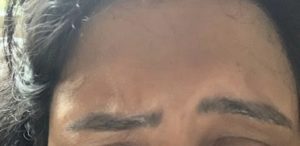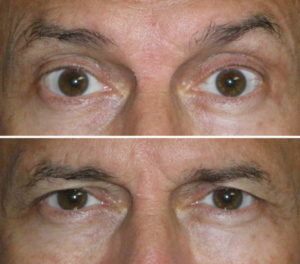Injectables are tricky to master, and anyone who tells you it’s easy, is often not telling the truth.
With more experience, I’ve found that I see more and more variation in faces as to what can go wrong, go awry and even lead to unexpected results. Just like with Medicine, there is usually a Dunning-Kruger effect initially- when we are very new and know a little, we think we know a lot and it sometimes veers on arrogance.
With actual experience and knowledge, we realise just how limited we are in our understanding, and how much can truly go wrong - not necessarily catastrophically wrong, but inconveniently, sometimes embarrassingly wrong, with areas such as the human face, which we use to emote and express and which is so important for non verbal communication.
This week I’ve had several patients new to some injectable treatments for them, with some glitches reaching out, concerned something has gone wrong, when it is all part and parcel of first time treatment. At Skin Essentials we reach out regularly after someone’s first treatment when things may go wrong, and as our patients feel more confident, we take a far more laidback, hands off approach as is appropriate, reserving advice and discussion for in person reviews.
Nonetheless the enquiries this week have me thinking about the things that can potentially occur with anti wrinkle treatments, which are normal, no matter how much we prepare patients for them. So what are the commonest side effects that, while not life threatening or a medical emergency, nonetheless may cause someone to reach out for advice until it all settles?
1. Asymmetry.
Among the commonest, asymmetry.
Few of us are completely symmetrical, and sometimes the symmetry may be so mild as to not be apparent to us until we begin to undertake injectables. Then, perhaps as we begin to pay more attention to our own faces and the smallest of changes, or sometimes because anti wrinkle treatment may affect one side more than the other initially, even if the same dose was used; or surrounding muscles may pull on one side more than the other, asymmetry may be more obvious to us and to others also till it equalises.

This is fairly common for first time treatment to a given part of the face - I often warn patients of this, and to leave well enough alone till 14 days because we cannot not do anything till then. 9 times out of 10 the asymmetry will settle in a few days, leading to evenness by the 14th day. Problem fixed!
Asymmetry is commonest in areas such as:
In paired areas, especially when multiple muscles are involved such as with frowns and smiles, it is impossible to achieve complete symmetry (it is a rare person who's symmetrical anyway), but eyebrow asymmetry is usually easily fixed as are uneven forehead lines.
We offer all new patients a complimentary review at 14 days to assess their first treatment in clinic and to address any concerns. This is much easier than emails to and fro, and allows me to standardise for photos taken in clinic if there are symmetry concerns for next time.
2. Heavy forehead/ brows
In some patients, this may be an issue when the toxin is first kicking in. The forehead, which is the main elevator of the forehead, may feel heavy. When overdone, eyebrows may flatten and be hard to raise at all, giving women a mannish appearance. In severe cases, patients report not being able to raise their brows at all, and feeling like someone is pressing down on their forehead the whole time.

This is different to patients who prefer a more arched appearance to their brows, and who have severe, visible forehead lines because of the regular unconscious raising of their eyebrows. With toxin to the forehead, they may still be able to raise the brows, and the forehead lines may smooth out due to treatment, but they may feel uncomfortable or dislike the effect treatment to this area has for them, unlike overtreatment of the forehead, which causes a flattening of the brows, inability to raise them and drooping of the eyebrow, causing eyelid skin to be pushed down as in the photo above (courtesy of Dr Joe Niamtu)
If there is suitable movement retained, the dose is likely not excessive, but all toxin to the forehead will slightly flatten the brows such that if the effect is one that is distressing for the patient, they may prefer forehead lines over the unpleasant feeling/ loss of arch in their brows or prefer a smaller than ideal dose that softens lines without compromising the ability to raise brows (more). Ultimately that is a personal matter that only each patient can decide for themselves. Life is too short to be frustrated about non essential treatments.
Unlike dermal filler, toxin cannot be removed or dissolved and we must wait it out, a process which can begin as early as 6 weeks post treatment. Also unlike dermal filler, the beauty of anti wrinkle treatment is that if unhappy, it’ll resolve itself in time (indeed, nothing CAN be done), whereas when done well, patients want results to last forever, which leads to our next point.
3. Return of lines/ movement sooner than 3 months
It is a misconception that faces treated with toxin will remain looking treated until the 3+ month mark when more treatment is needed.
Toxin, once injected, depending on the brand used, begins to kick in as early as 3-5 days and peaks (ie has maximum efficacy) at 14 days post treatment which is the best time to assess for effect.
As early as 6 weeks post treatment, it begins to wear off as new nerves supplying the muscles that move the face begin to regenerate. How soon this occurs is dose dependent - if you opt for a heavier dose, it may last a little bit longer before it begins to wear off but also leave you feeling more “frozen” initially with more natural movement several weeks later. With a lower dose to allow more movement all along, this may occur sooner, so it’s important to have that discussion with your doctor first and to budget appropriately. Many patients who initially say they want to retain movement quickly realise that they like the no/reduced movement so much they are less happy about lines returning from as early as 6 weeks. While I'm not a fan of frozen faces, it is nonetheless an important discussion to have with patients are review or at the next session to see if doses need adjusting if their budget allows for it.
Irrespective of your choice, muscle movement may begin to return as early as 6 weeks and increases in strength such that by 3 months, most of us intending to continue to be treated will book in for further treatment for best results, especially if lines are present even at rest.
Ways to prolong the “no movement” phase include a higher starting dose (which may temporarily paralyse/ freeze the area treated such that no movement is possible) with a higher cost, as well as more frequent treatment in some cases.
I personally refuse to treat sooner than 3 months for returning lines/ activity because over regular subsequent treatment, this will settle and treating too often may increase risk of antibodies to the toxin, whereby the treatment is less effective or no longer works.
It is unrealistic to expect to be frozen for the entire 3 months. Movement will gradually return until it’s close to pre treatment around the 3-4 month mark.
4. Accidentally injecting a neighbouring muscle when treating certain parts of the face.
This, is a true mistake and anyone who's been injecting long enough has likely done it. Not life threatening, but among the more annoying, frustrating and challenging to manage till the toxin begins to wears out, usually 4-6 weeks, occasionally longer depending on the dose. This may happen due to diffusion of toxin from the treated area to a nearby muscle, thereby affecting it, or by patients rubbing the treated area soon after treatment and spreading toxin across or accidentally injecting some fibres of a nearby muscle.
This is especially common when treating areas of the face, especially the lower face, which is the most mobile part and with many muscles helping us to smile, speak and much more; groups of muscles here, if injected accidentally may cause a lopsided smile or movement until the toxin begins to wear off.

Common examples of this include treatment for teeth grinding/ bruxism, where injecting the masseter muscles to close to another muscles, the risorius, may affect the smile on one side, giving a lopsided appearance that will last weeks and occasionally months (depending on the dose).
Another example is treating the chin for pebble chin, and for downturned mouth corners. We want to inject the mentalis and DAOs, but due to the proximity of another muscle, the DAI, we may end up giving our patients a lopsided smile until the toxin wears off.
Takeaway points?
As always, injectables are not just a beauty treatment but medical procedures with rare but real risks so it pays to choose your clinician on the basis of their qualifications and their experience instead of the latest bargain. Equally, mistakes can occur in the best of hands, so having a relationship based on trust with your clinician is key.
To complicate matters even more, muscle movement and activity returns due to the effect of nerves that supply the treated muscles regenerating, and this is not an entirely predictable process such that from treatment to treatment, results may differ, sometimes by a little and at other times by more. It is important to appreciate that just because you have not had a negative side effect does not mean you will never get one, even with the same clinician who knows you and whom you trust.
Every face is unique and different and it’s not possible to always anticipate how a particular muscle or group of muscles will behave in response to treatment. So I generally advise patients it takes 1-2 treatments to find the happy balance for them and their treatment including dose and it’s as much trial and error for me as it is for them to learn what dose works best.
| Monday: | By agreement only |
| Tuesday: | CLOSED |
| Wednesday: | 10:00 - 17:00 |
| Thursday: | 10:00 – 18:00 |
| Friday: | 09:00 – 17:00 |
| Saturday: | 09:00 – 15:00 |
Skin Essentials will reopen the week beginning 11th October 2021.
Per NSW government regulations, only double vaccinated patients will be served when we reopen and we will be checking vaccination certificates for all patients upon booking. This requirement may change as of December 1st, and we will advise you accordingly.
Please email us (contact@skinessentials.com.au) or text us (0413174654) your vaccination certificate as soon after booking as you can. We will not be able to see anyone for treatments or confirm appointments without this.
In the interest of full disclosure, transparency and patient safety, all patient facing staff will be fully vaccinated by the time of reopening. Please read our reopening FAQ for more information.